The simplicity and instantaneous nature of the scratch card game are deeply rooted in popular culture. Their engaging mechanics offer users immediate gratification, delivering a quick dose of dopamine that captivates and builds loyalty.
In this article, we explore the main uses of scratch cards in a marketing strategy. We begin by detailing the objectives they can achieve. We’ll also offer a comprehensive tutorial on how to easily create your own online scratchcard game, to boost your campaigns and effectively engage prospects and customers.
Why launch an online scratch game?
An online scratch game is a powerful marketing lever that achieves a number of strategic objectives. By combining interactivity and immediacy, it easily captures the audience’s attention and encourages them to spend more time with the brand. Here’s how it can serve the strategic objectives of retailers.
1. Brand awareness and branding – Boosting brand visibility
A digital scratch game is a fun, accessible format that easily attracts users’ attention. It offers an engaging experience that leaves a lasting impression and promotes brand memorability.
According to a recent study, interactive games increase brand recall by 33% compared to traditional advertising formats. In fact, they go beyond passive viewing, making it easier to retain the commercial messages conveyed by the campaign.
Example: For Chandeleur, the Lotus brand invited users to top their pancakes with its spread via an interactive display campaign (or Playable Ads). This fun and original format added a touch of deliciousness to the event.
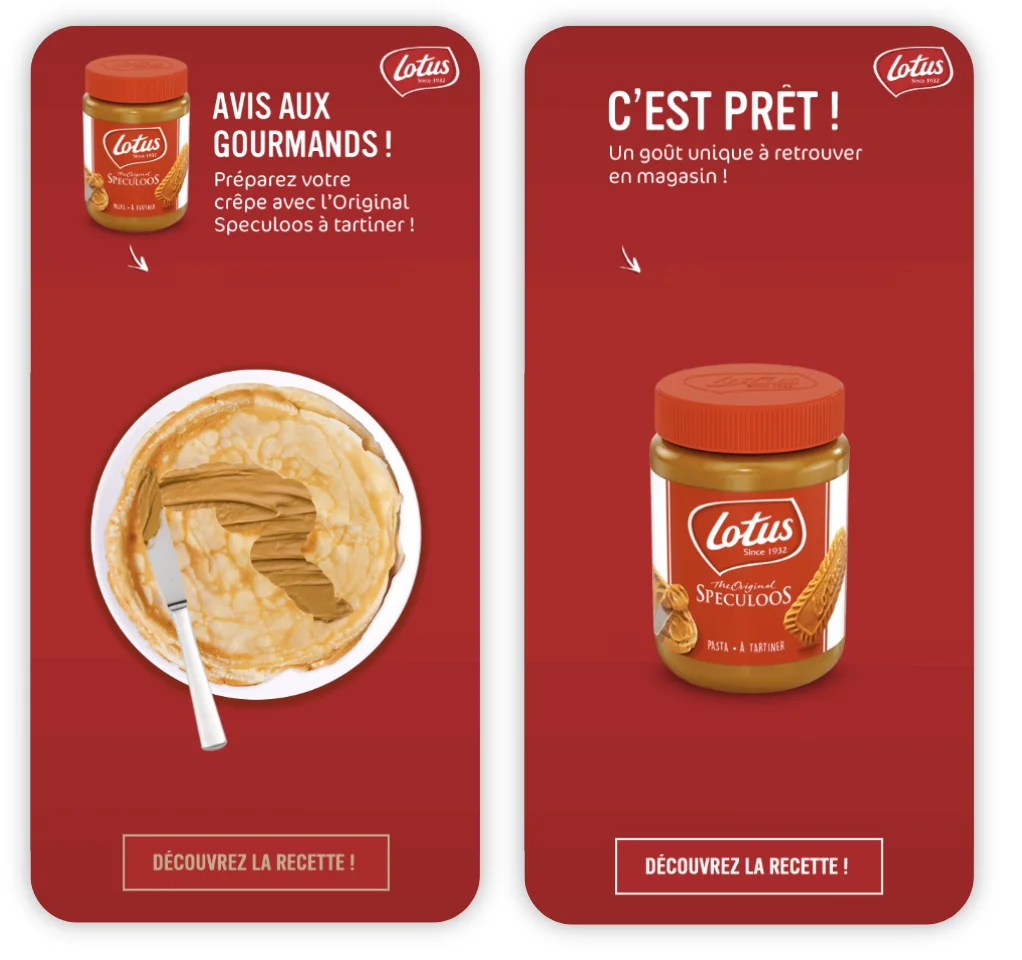
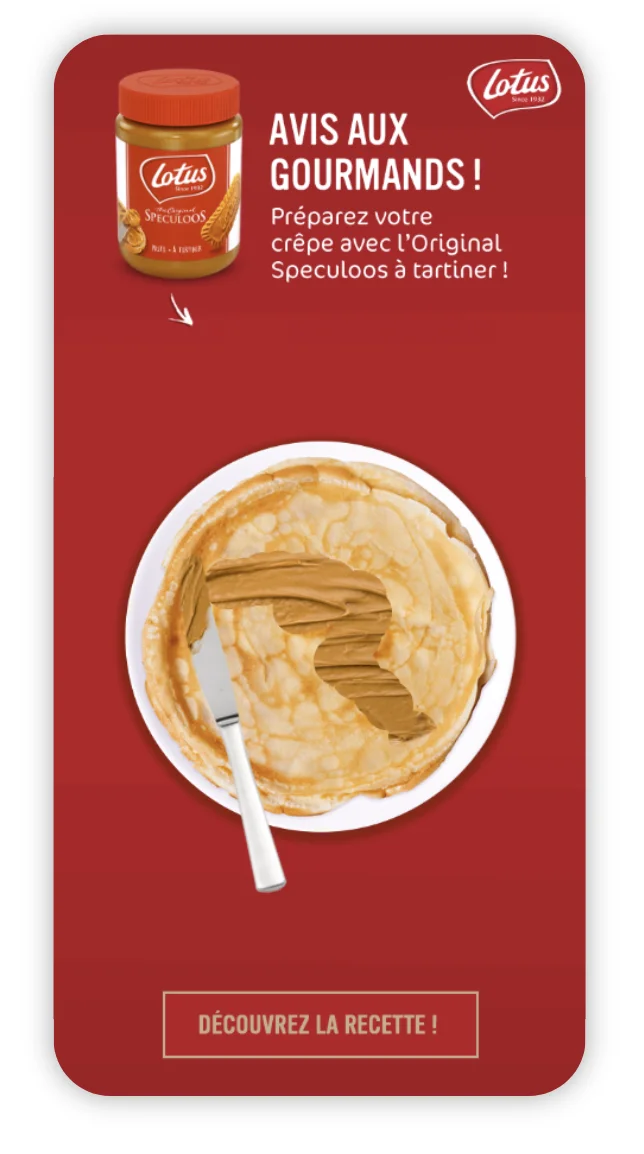
2. Community engagement – Actively involving your audience
Scratch game encourage interaction and participation, particularly through sharing on social networks. The promise of a reward creates a viral effect that encourages users to invite their friends to play.
Example: After participating in the Lotus brand’s online scratchcard game, users were redirected to the brand’s Instagram account. This operation generated almost 200,000 clicks, boosting engagement with the company.
3. Generate traffic to your sales channels – Attract players to a store (online or physical)
By integrating discount coupons, special offers or loyalty points, the scratch card game can encourage participants to visit a website, a physical store or even download a mobile application.
Example: Sephora used gaming to drive traffic to Nuxe products on the website and app. The campaign aimed to increase sales of Nuxe products on Sephora’s marketplace. The integration of an interstitial highlighted product features.
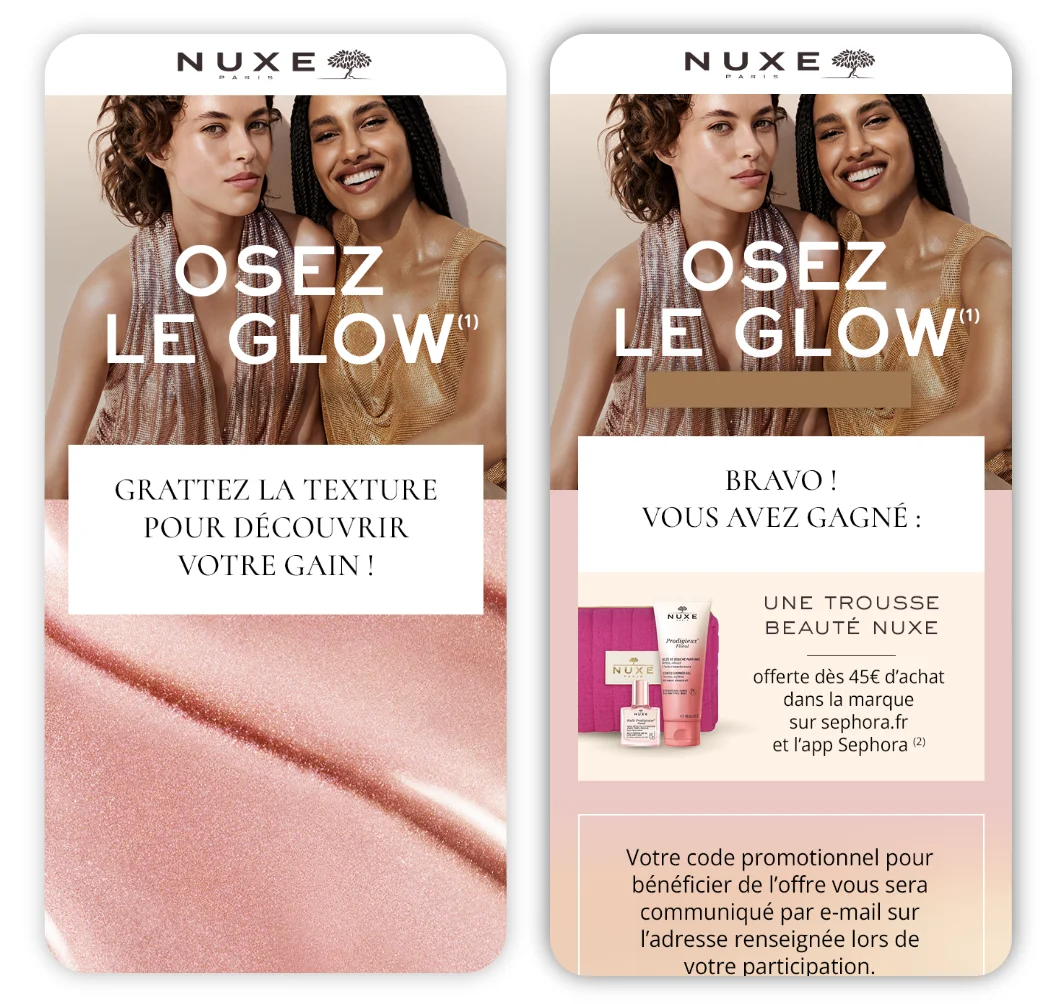

4. Convert new customers – turn players into buyers
By attracting prospects with a fun mechanic and offering them exclusive deals, brands also facilitate their transition to the act of buying. It’s an excellent way to broaden your customer base while boosting your conversion rate. According to a recent study, competitions have an average conversion rate of 34%.
Example:For the back-to-school season, Kiabi launched a scratch-off competition focused on lead generation and conversion, giving participants the chance to win attractive prizes, including vouchers. Thanks to media coverage via Adictiz Ads, the operation achieved an opt-in rate of 68% and generated over 31K in sales.
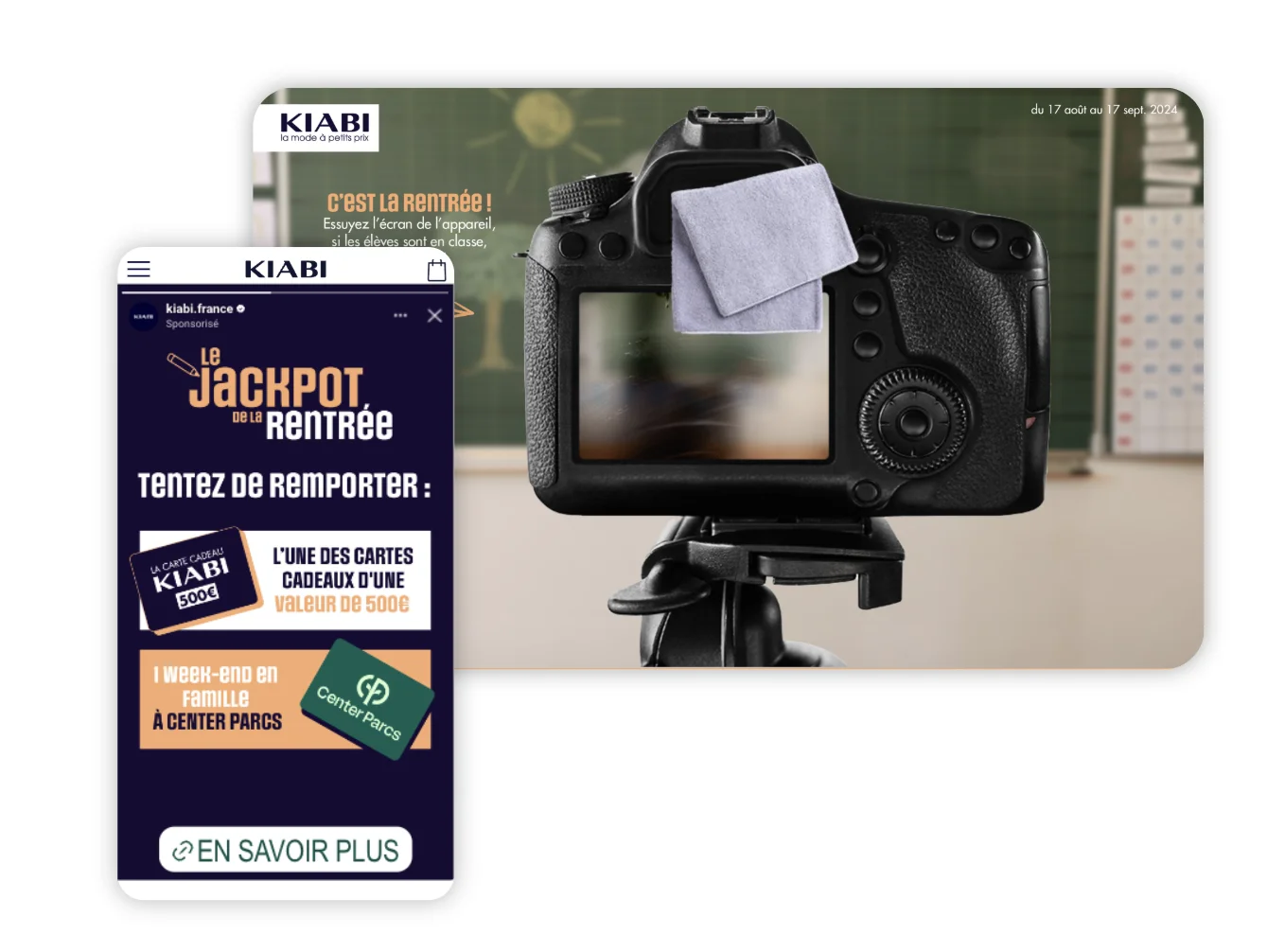
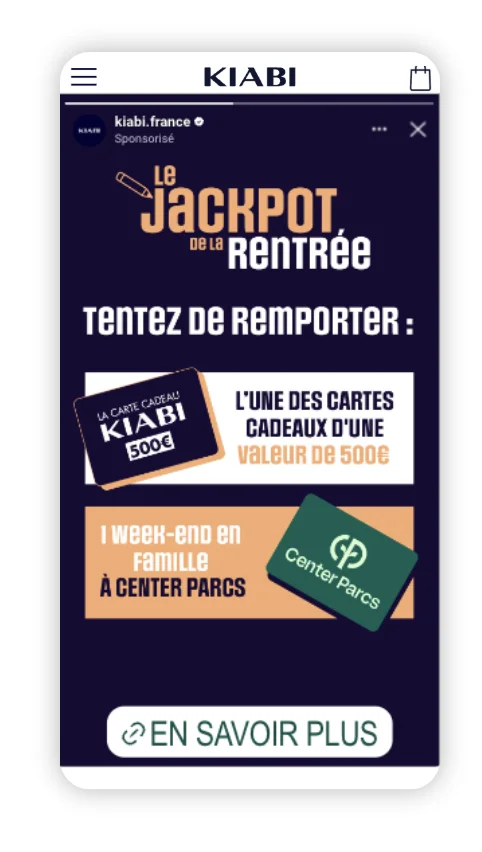
5. Building customer loyalty – Rewarding and retaining existing customers
Offering a scratch game to loyal customers is an excellent way of thanking them and encouraging them to return. A well thought-out gamification strategy can extend the customer relationship and strengthen brand loyalty.
The marketing game is an excellent lever for data collection. For example, participants can fill in a form or give an opt-in before accessing the scratch card or finding out about their reward. This data can then be used by the retailer for retargeting with targeted offers throughout the year.
Example: Sephora and Nuxe’s co-branded scratch card game also collected data via the form. Sephora used this format to recruit qualified leads for targeting and retargeting campaigns.
Our tutorial for creating your own online scratch game
Creating an effective online scratch game requires careful planning and the use of appropriate tools. Here’s a detailed guide to help brands gamify their marketing campaigns.
1. Choose the right mechanics
To design an online scratch card game, it’s essential to select a specialized platform offering appropriate functionalities. Adictiz, for example, is a complete tool for setting up, broadcasting and publicizing your scratchcard competition.
The gamification tool should, for example, offer a dedicated module for easily creating and customizing marketing games, to provide the most immersive experience possible for the brand’s audience.
2. Define your goals
Before embarking on the design of a digital scratch card game, it’s important to clearly identify the objectives of the campaign.
- Increase brand awareness: Attract new users and reinforce brand presence with original mechanics and/or attractive rewards.
- Engage your community: Stimulate the interaction and loyalty of existing customers by capitalizing on a marketing highlight, for example. Sharing the game on social networks also boosts its virality.
- Generate traffic: Direct participants to your website (Drive-to-Web) or points of sale (Drive-to-Store) by offering incentives for time-limited purchases or specific sales channels.
- Collect data: Obtain valuable information about users for future marketing actions. In this case, the retailer will need to integrate an additional step into its game experience by creating a data collection form.
3. Customize the online scratchcard game
Personalization is crucial to delivering an immersive experience, reinforcing branding and facilitating the memorization of the advertising message. To achieve this, advertisers can personalize several elements of their campaign:
- Visuals: Integrate images that reflect the brand’s identity. In the Adictiz module, for example, retailers can import specific backgrounds and graphic elements.
- Scratch effects: Choose from different effects (smoke, dust, confetti, images) to make the game more attractive.
- Custom cursor: Replace the standard cursor with an image in keeping with your brand’s universe or the campaign’s commercial theme/highlight.
4. Manage endowments
Rewards are one of the key factors in the success of a gamification marketing campaign. <a href="https://www.adictiz.com/guide-dotation/
“>Reward management must therefore be well planned.
- Types of prizes: Offer a variety of rewards (discounts, free products, exclusive access) to motivate participation.
- Distribution: Use instant winners to determine when prizes are awarded. The advertiser must ensure that winners are properly authenticated to avoid fraud.
- Results pages: Create separate pages for winners and losers, with messages tailored to each case.
5. Launch and promotion of the scratch game campaign
Once the scratchcard is ready, all that’s left to do is distribute it. This last part is crucial, since it will ensure maximum visibility for the campaign and thus determine its success (ROI).
- Distribution channels: Share the game on your social networks, newsletter and website/app to reach a large audience. Media coverage of the game via an ad campaign can also reach a wider audience.
- Sharing incentives: Encourage participants to share the game on their networks by offering additional chances to win or specific rewards.
- Performance analysis: Track participation statistics to assess campaign effectiveness and adjust strategy if necessary.
Conclusion
Engage your audience and boost your sales by creating an online scratch card game. This fun and original experience will strengthen your relationship with prospects and customers, and help you achieve your strategic objectives. Adictiz will work with you every step of the way, from design to distribution, to maximize the impact of your campaign!






